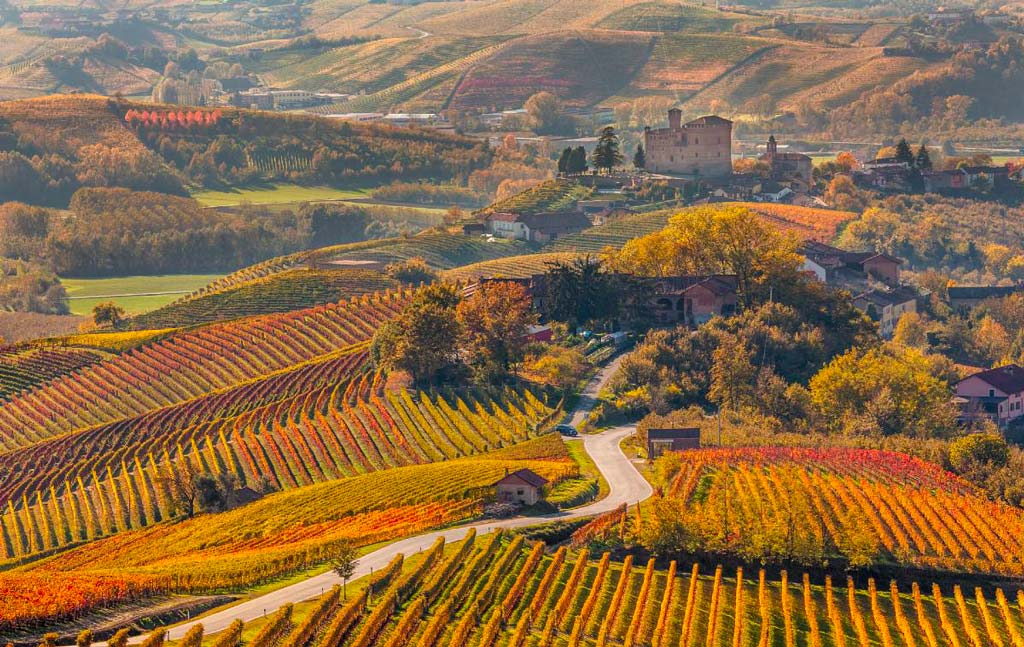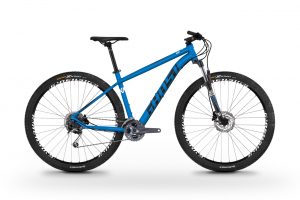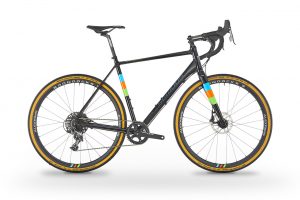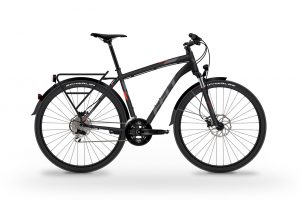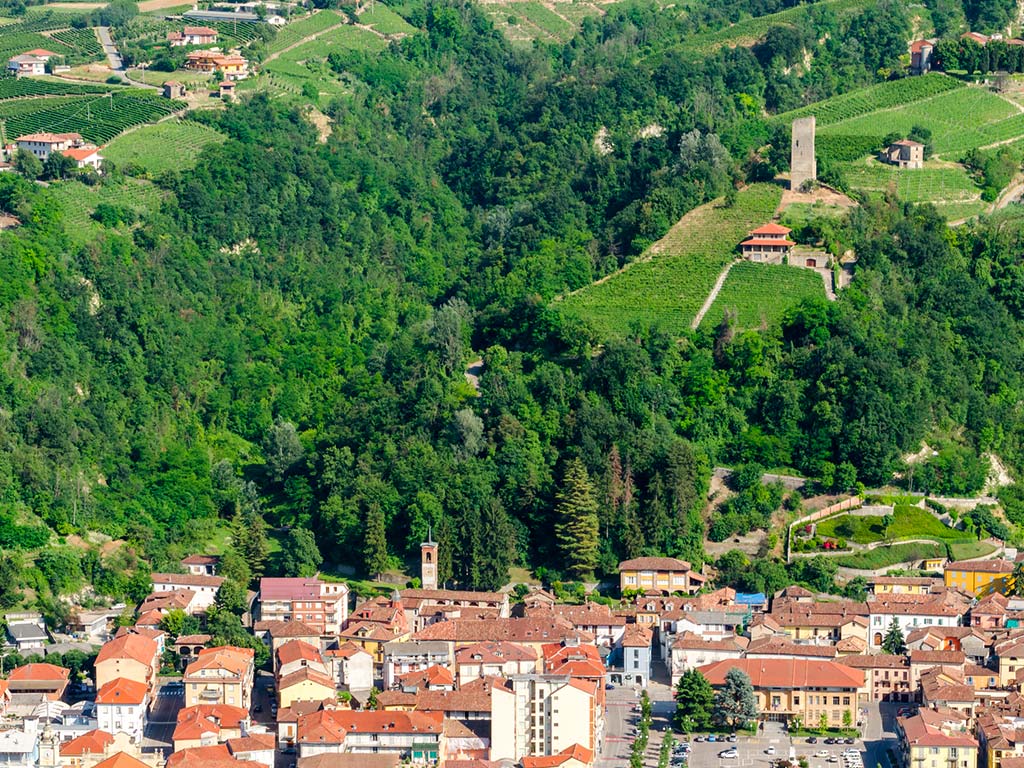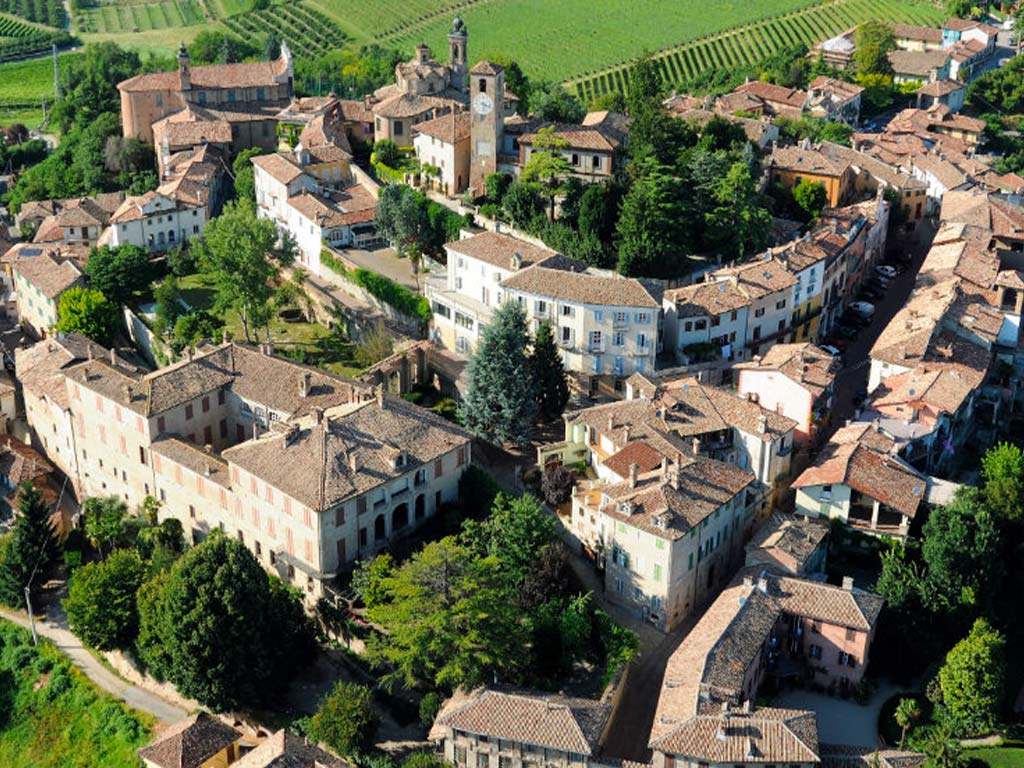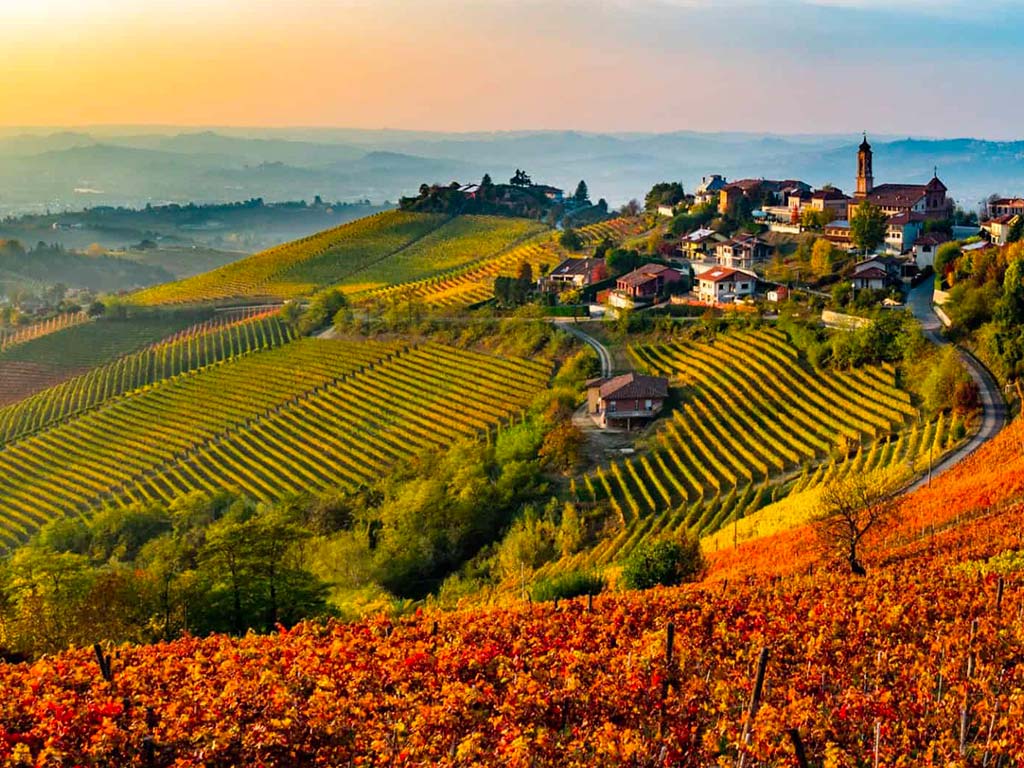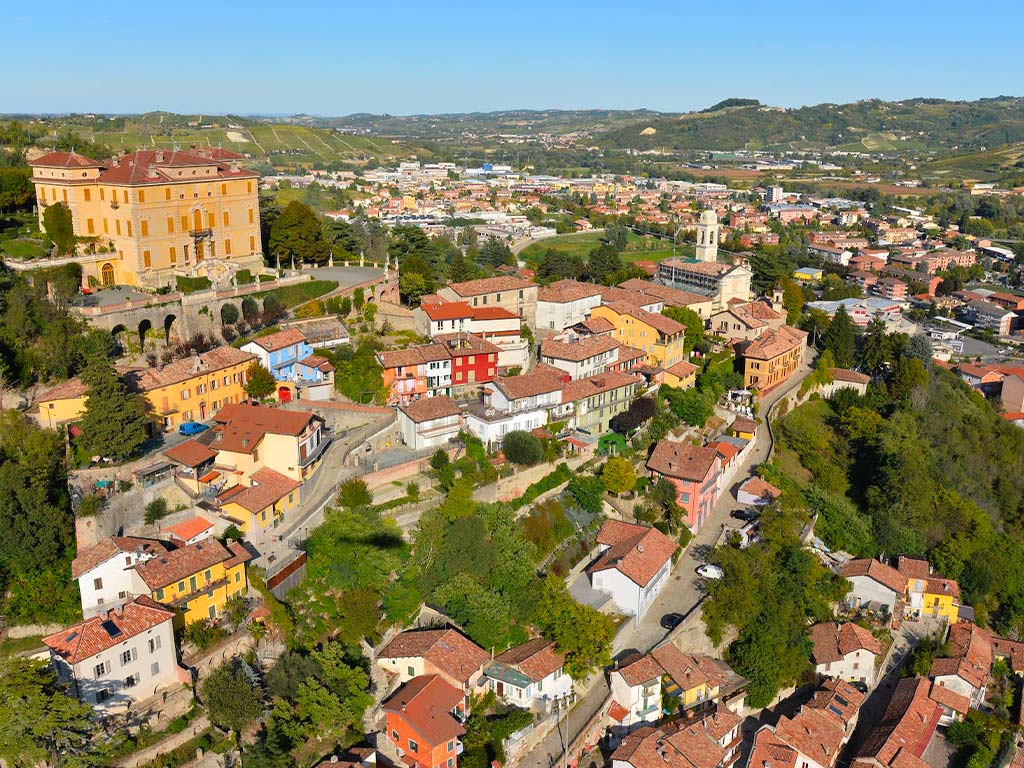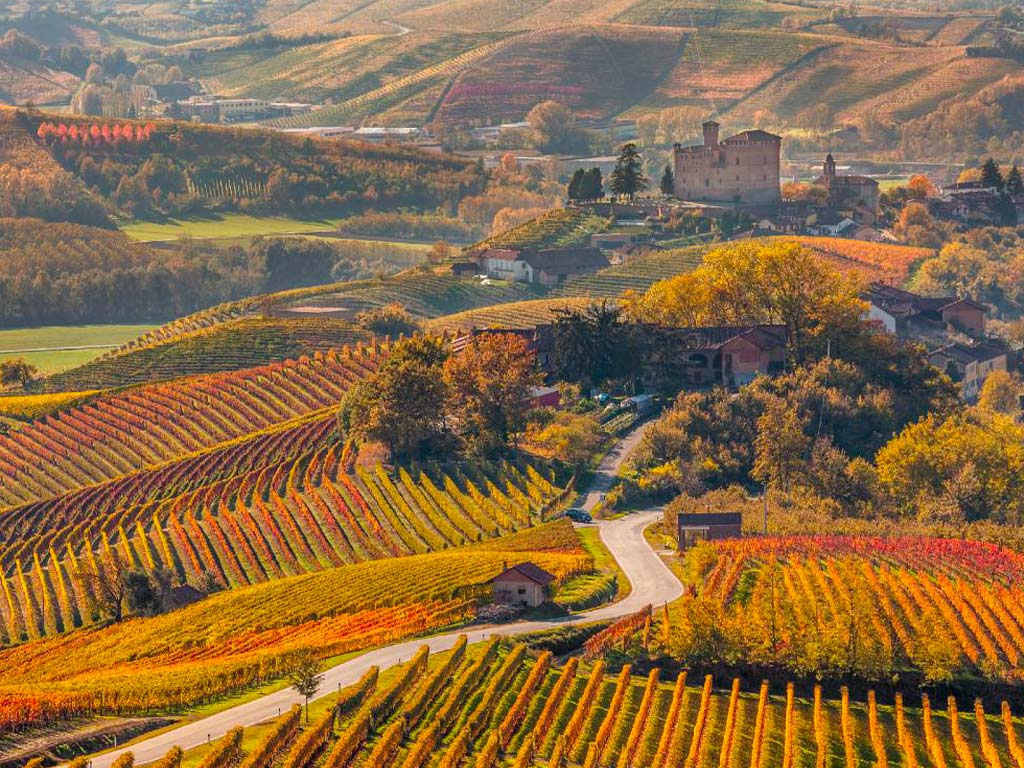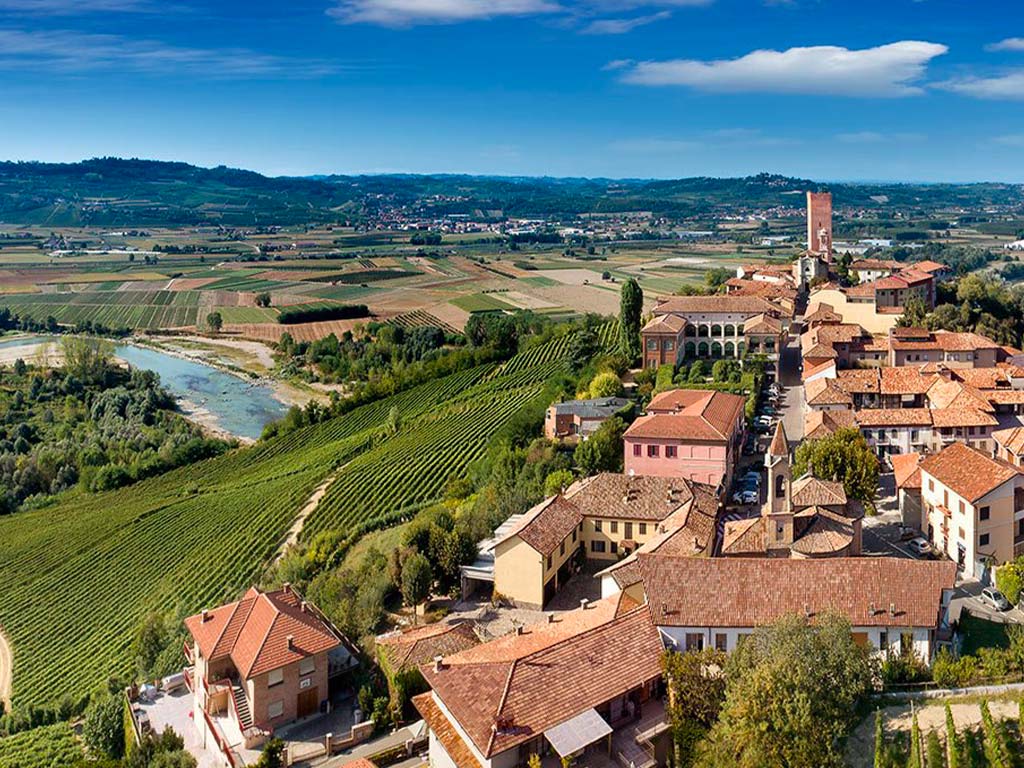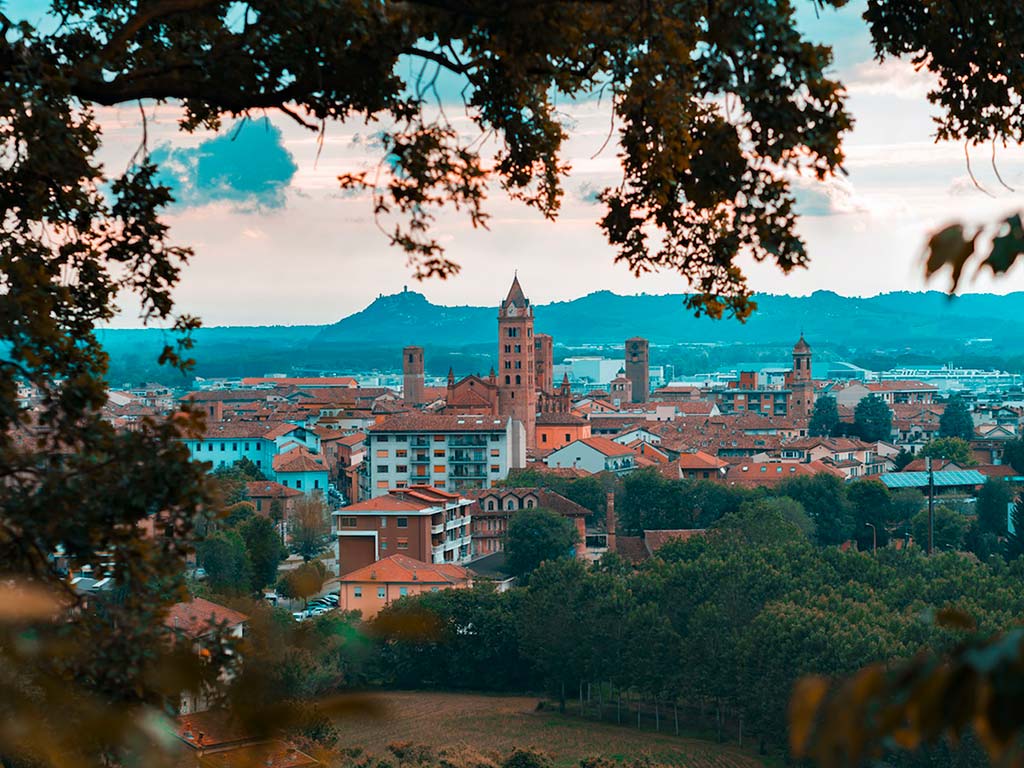Roadbike of the UNESCO Hills
The Roadbike of the UNESCO Hills is a route of about 28 km that winds through the enchanting hills of Piedmont, offering an unforgettable experience for anyone who wants to immerse themselves in the beautiful landscapes and vineyards of the Langhe and Monferrato, recognized as a World Heritage Site by UNESCO.
The variety of stages, each with its own uniqueness, allows you to experience the territory through history, culture, food and wine and breathtaking views.
We recommend to take the Roadbike of the UNESCO Hills in spring or autumn, when the hills are tinged with evocative and vivid colours and the temperatures are milder, making cycling an even more pleasant and unique experience.
Roadbike of the UNESCO Hills
Our journey begins in Alba, the capital of the Langhe, renowned for its fine white truffles and excellent wines. Its historic centre, dominated by the Cathedral of San Lorenzo and the medieval towers, with its refined beauty and architectural jewels, represents a first important glimpse of the region’s historical heritage. In addition to architecture, the city also offers a first introduction to local gastronomy, with its many artisan pastry shops where you can make a tasty stop before resuming your journey.
We then continue to Barolo, welcomed by its splendid vineyards from which the homonymous wine is born. Here, in addition to visiting the evocative Castello Falletti, which houses the Enoteca Regionale del Barolo (Barolo Regional Wine Shop) and the Museo del Vino (Wine Museum), you can immerse yourself in various tastings at the many local wineries to discover the intense flavour of Barolo and all the other varieties produced in the area.
On the way, we can make a stop at La Morra, another village nestled in the hills, famous for its viewpoint that offers a breathtaking view of the surrounding vineyards, recognized by UNESCO as a World Heritage Site. Here, you can also explore the Barolo Chapel, a contemporary art project by Sol LeWitt and David Tremlett, which adds an artistic and modern touch to a landscape dominated by winemaking tradition.
For those who are more interested in the history and culture of the region, you could make an additional stop at the Castle of Grinzane Cavour, home to Camillo Benso Conte di Cavour which today houses the Piedmontese Regional Wine Cellar, a real museum dedicated to the history of the territory and the wine production of the region.
Back in Alba, after a pleasant ride of about 7 km – characterized by gentle climbs accessible to cyclists of any level – we arrive in Barbaresco. Like Alba, this stage represents the perfect balance between gastronomy, art, wine and history. The main point of interest is certainly the Tower of Barbaresco, an ancient building of the eleventh century from which you can enjoy an extraordinary panoramic view of the hills of Astigiano, Roero and Monferrato and then up to the alpine chain. For wine lovers, a visit to the Enoteca Regionale del Barbaresco is definitely a must. Located inside the deconsecrated church of San Donato, today it represents about 135 wineries that can be visited and where you can taste the best of local wine production.
Leaving Barbaresco, after just 4 km of cycling we arrive in Neive, named ‘’ Most Beautiful Village in Italy’’. The medieval old town, with its cobbled streets and ancient stone houses, will give you the impression of a real immersion in the history of our region. Among the places not to be missed are the Clock Tower, from which you can enjoy another beautiful view of the surrounding hills, and the Parish Church of Saints Peter and Paul. For those looking for a unique panoramic view, we recommend following the short dirt path that leads to the Giant Bench of Neive, one of the most curious and characteristic stages of our route that attracts dozens and dozens of tourists every day, as well as being the subject of hundreds of souvenir photos.
The next section leads to Santo Stefano Belbo, 8 km away. This village is known for being the birthplace of the great writer Cesare Pavese, and here you can visit the Casa Natale di Pavese, now transformed into a museum. Inside, manuscripts, photographs and personal objects of the writer are exhibited, offering an interesting immersion in the literary world that has marked this land. Not far from the museum, to complete our literary journey, we will find the Moncucco Hill, one of the most evocative landscapes in Pavesian fiction.
The last stop on our route is Canelli. The descent to the village is gentle and offers spectacular views of the hills, ending the journey with one of the most evocative experiences of the route. Canelli is famous for its Underground Cathedrals, historic cellars carved into the tuff (a particular type of sedimentary rock), authentic masterpieces of underground architecture that preserve the precious local sparkling wines. After visiting the cathedrals, you can continue to Castello Gancia, an elegant 18th-century residence belonging to the pioneering family of sparkling wine production in Italy. After this itinerary of enchanting villages and suggestive views, for the most romantic, we recommend a walk along the Via degli Innamorati to end our tour with a pinch of poetry and romance.
All kinds of cyclists, families, couples or loners who want to dive into the heart of the cultural and landscape treasures of Turin, surrounded by an unspoilt environment, away from the chaos of the city


